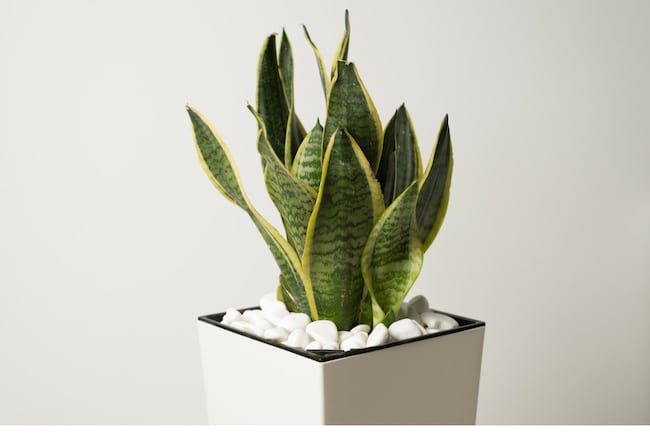
Agriculturegenus
Tuesday, January 25, 2022
Gherkin : The Pickle King Of India

Saturday, January 22, 2022
Gender Specific Impediments in Agriculture
Closing the global gender gap would grow to Food Production and sustainability for futures According to the FAO, on the off chance that women farmers get close enough to similar assets as their male partners, the whole world will eat as well. So Abruptly We know gender Bias has been running for ages but the only persons who will suffer are the women. Why our policies and society are paralyzing the entitlements by biasing women in Agriculture. The roots of problems begin at recognizing their efforts and sincerity towards their work Inherent
Gender bias in the economic system: are limiting the women to access financial credits for buying the inputs required also these are making them dependent on male counterparts for Capital investments. It was discovered that the main 4% of women approach institutional credit in the Indian territory of Uttar Pradesh. Land, as a resource, likewise shapes insurance for bank credits. On the off chance that women don't have properties on their names, they are inaccessible to a profit of credit benefits for their homesteads. This would also lead to disparities in knowledge among women Absence of cash pushes them to utilize obsolete innovation and old strategies for creation, hence, in the end, affecting the yield of their homesteads Addressing gender equality is essential in achieving sustainability and increasing the productivity and reducing poverty and food security to the optimum level.
Invisible, unpaid labor force: A report by Oxfam referenced that in India, 75% of full-time Farm laborers are women and contribute 60 to 80 percent of the country's yearly yield. In any yield season, women are assessed to put 3,300 hours in planting and collecting, when contrasted with 1,860 hours that are put by men in the cultivating movement. However, their enormous commitment goes unnoticed, both on account of families and the public authority. The report additionally referenced that 33% of ladies in India work on the Farms possessed by their folks, spouses, or parents-in-law. On 12.8 percent of ladies in the nation own territory in their name. Indian Women just own 12.8% of the country's land
Unequal Market Access: For the male-dominated agricultural markets, it becomes difficult for Women to bargain for getting the adequate price discovery of their Commodities and haggle with the traders and arhtiya for Negotiations. India's past rural guidelines essentially guaranteed that crop deal costs cross country in India stayed near the value floor set by the public authority, said the Mahila Kisan Adhikar Manch - a casual gathering of about 120 women farmer associations and their partners - in an assertion. The gathering fears the new "time of divided and unregulated business sectors" will be even less "Women's Farmers agreeable" than the old framework.
Lack of education, knowledge, and extension: however these are leading them away from the latest changes preventing their access to better information and market linkages to extension services Women oriented self-help groups and FPO & FPC are working together to bring their aggregation back into the form for the better upliftment of the Country.
Government Policies and laws: are making them recognize their true potential by denying and hindrances their institute support. The reason is the society in which we are living we don,t see them as the potential and primary earners of the family and do not list them, title owners. However, in the U.S, they don't face the same restriction as per one women farmer who says the persistent gender bias in Agriculture is Easier for Her family.
During the 'Kisan Sansad' at Jantar Mantar, the women farmers had said that these difficult stretches had shown that ladies and men structure the mainstays of horticulture in the country. While in certain families men approached to dissent for a really long time at a stretch on the Capital's boundary, ladies assumed responsibility for homes, kids, and homesteads. In different occurrences, in the event that ladies approached to be a piece of the dissent, it was the ones who took up the obligations at home. Notwithstanding buckling down on the fields all day, every day, the brush-off towards their endeavors by families and the specialists will quite often lastingly affect ladies. The self-destruction rates by women farmers are regularly under-addressed in India. All things considered, one Women farmer ends her life consistently in Maharashtra's Amravati region. women's admittance to equity through Judiciary is as of now restricted. Among rustic social orders, ladies moving toward the Courts or the Police are as yet peered downward on. Barriers facings by women farmers are mostly by the dominated societies
Also worldwide efforts for uplifting women farmers have been gaining momentum Big firms like PepsiCo is teaming up with the CARE organization for building the engagements by equipping them with Technical as well as Hi-tech knowledge To build a Sustainable environment in the Campaign by promoting awareness among the and offers them equal opportunities which they deserve The World bank also make gender equity in the agriculture and food sector a specific goal
"If you teach a man to farm, his family will eat. If you teach a woman to farm the whole community will eat"
Friday, July 10, 2020
House Plants- The Natural Air Purifier
- increment state of mind and efficiency
- improve focus and memory
- diminish pressure and weariness
- One of the few houseplants that bloom indoor. The flowers have good fragrance and bloom throughout the summer.
- It's better if you keep the plants in shady areas and keep the soil moist without overwatering.
- This plant has a high transpirational rate, thus humidity in the surrounding area.
- It removes ammonia benzene, formaldehyde, and trichloroethylene from the air.
- It is a toxic Plant. Leaves are harmful to kids and pets.

- This plant is known for its elegance and height. Can grow up to 4 to 12 feet long.It prefers bright but indirect sunlight.
- High transcriptional capacity thus keeps the area moist.
- you better keep the soil of plant moist and mist occasionally to prevent spider mites.
- It removes formaldehyde, benzene, carbon monoxide, xylene, chloroform from the air.
- Non-toxic Plant.

- It has a long life and does not need much care.
- It's OK if you water the plant occasionally.
- This plant prefers drier conditions and some sun.
- It removes benzene, formaldehyde, trichloroethylene, and xylene
- This plant is relatively easy to grow.
- Loves to stay in a cool place with high humidity and indirect sunlight.
- This plant is relatively finicky, need to water them regularly. Loves to stay moist.
- Depending upon humidity and moisture in your home, need to water them or mist their leaves daily.
- It removes formaldehyde and xylene from the air.

- This plant can tolerate lots of negligence and is forgiven when overwatered and quite effective in removing many air pollutants.
- This Plant can grow in a variety of conditions and can grow up to 8 feet long.
- Water the plant when the soil gets dry and trims the tendrils when plants get too big.
- It removes formaldehyde, xylene, toluene, benzene, carbon monoxide from the air.
- Keep the plant out of reach of pets
- This plant is easy to care for grow very easily.
- The leaves of this plant contain clear liquid that has wound healing, antibacterial and anti-inflammatory properties.
- Don't need to water the plant regularly. It prefers dry conditions.
- It removes formaldehyde from the air.
Thursday, July 9, 2020
Atmanirbhar Bharat Abhiyan - Strengthening Indian Farmers
- Framework advancement identified with Integrated Beekeeping Development Centers, Collection, Marketing and Storage Centers, Post Harvest and worth Addition offices and so forth
- Execution of gauges and Developing detectability framework
- Limit working with push on ladies;
- Advancement of value core stock and honey bee raisers.
- This will prompt increment in pay for 2 lakh beekeepers and quality nectar to consumers.
Sunday, May 31, 2020
AGRICULTURE FUTURE TRADING a way forward
The future is market-based instruments for managing and analyzing the risks which help in the efficient agricultural market establishment. The main aims of Futures markets enable the farmers to deliver the crop at a specified price at some future date. The clearing houses of the commodity exchanges guarantee the performance of these contracts. A farmer, who is uncertain about the prices of his produce, can cover his risk by selling a futures contract sometime before the harvest day. Also, farmers are not able to sell there product directly to ultimate buyers, on account of APMC. As the production, supply, and distribution of many Agri commodities are still governed by the state. These are forces to sell their commodity to the local aggregators. This is increasing the interference of a number of Intermediaries. Problems of standardized costs are boosting up higher. This is the main reason for the price variation of commodities among different trading centers. Commodity exchanges are playing a significant role by facilitating the integration of agriculture credit, securitization of Agricultural production, and Future market leading the more efficient for the farmer to predict there earning and Future Investment plans. This is possible mainly due to major reforms in the field of the exchanges present, there are 2 nationalized exchanges viz NCDEX and MCX.NCDEX is the leading future trading of Agri commodities. Exchanges like NCDEX'S electronic mode of grading and conformance both the parameters of futures that is quality and quantity have helped to the established amalgamation of the market place that is accessible to market participants, on time, ignoring the barrier of locations crossing the country.Reinforcement of future market has explored the logistics and warehousing development. Farmer's problem of price Fluctuations has been offsets the price risk by hedging. Hedging is insurance against abnormal or unusual price changes or minimizing price risk. Hedging is a way to reduce risks exposure by taking an offsetting position in closely related commodities. The future effectively locks in the price of a commodity today even if it will be bought or sold in physical form in the future.NCDEX future like mustard seeds, Guar/Guar Gum, cotton oil, soya oil, and Chana best hedging tool available is highly correlated to spot prices and that makes future perfect tools. Correlation between the spot price and price of future contracts (Basis risk is the difference between future and spot price For better participation in future trading and efficient hedging, liquidity of future commodity is an important feature for farmers.
Sunday, April 12, 2020
Sea weed Farming "the ocean of opportunities"
From the beginning, India has been venerated with ample sources of sumptuous possibilities. India has recognized the bountiful expedience that its seashore offers. Blessed with the tremendous coastline of a total of 7516.6 km varying from 3214 km from north to south and 2933 km from east to west.
Seaweed as its name gives misinterpretation of a useless plant whereas it is the novel the miracle of the sea. It is usually grown in shallow water areas. seaweeds are rhizosphere algae lacking true stems, roots, and leaves. It is a renewable source rich in vitamins and minerals there are 900 species of green seaweed,4000 red species, and 1500 brown species found in cooler temperature of nature.out of which only 221 species of seaweeds are utilized commercially of this 145 species are used for food and 110 species for phycocolloid production leading to the significant sources of Alginates, Agars, and Carrageenans. As we know Agar has been working as a vital source in the food production and pharmaceutical industry. Apart from rich in minerals it translucent and hold the medical ailment properties. Asia is the pioneer in the world for seaweed cultivation & more than 80% is contributed by China, Korea, and Japan.
India get into the focus in 2006 when Pepsico opted for contract farming of seaweed in Tamil Nadu having commercially used for its various confectionary units and majorly for Dry weed Export. After Pepsico, CSMCRI (Central Salt & Marine Chemical Research Institute) has potentially identified various market opportunities for seaweed trade in the Bhavnagar, Gujrat. Today the Bigman like Tata Chemical, Coromandals fertilizers, Seth's company, and Marl Pelcare Company is having huge market growth from these seaweeds. Also, Kappaphycus alvarezii has been started cultivated by seaweed fishing communities in India. According to some reports by media, the seaweed cultivator earns Rs. 2000 crore a year. The inputs are negligible whereas for dried Rs. 86000 per year.
Currently, seaweed, grown in Tami Nadu &Gujrat & around Lakshadweep, Andaman&Nicobar Island. Also, the rich coastline bodies of seaweeds in Mumbai, Ratnagiri, Goa, Karwar, Varkala, Pulical in Tamil Nadu and Chilika in Orissa are embodied successfully. Basically, there are 3 methods of seaweed harvesting like Single Rope Floating Raft (SRFR), Fixed Bottom long line method(Coir Rope & Nylon Rope) and Integrate Multi intrinsic Aquaculture. The Global seaweed market size valued $ 4,097.93 million in 2017 projected to reach $ 9075.657 by 2024 with CAGR of 12.09 from 2018 to 2024.






